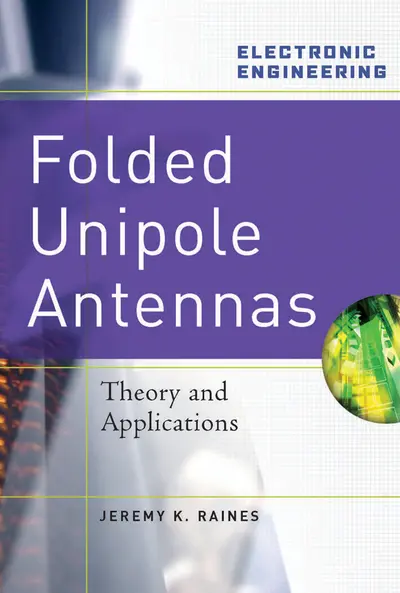My Account Details

ISBN10: 0071474854 | ISBN13: 9780071474856

Step 1 . Download Adobe Digital Editions to your PC or Mac desktop/laptop.
Step 2. Register and authorize your Adobe ID (optional). To access your eBook on multiple devices, first create an Adobe ID at account.adobe.com. Then, open Adobe Digital Editions, go to the Help menu, and select "Authorize Computer" to link your Adobe ID.
Step 3. Open Your eBook. Use Adobe Digital Editions to open the file. If the eBook doesn’t open, contact customer service for assistance.
Publisher's Note: Products purchased from Third Party sellers are not guaranteed by the publisher for quality, authenticity, or access to any online entitlements included with the product. Harness the Latest Advances in Folded Unipole Antenna Technology,Including New Detuning, Geophysical and Biomedical Applications Folded Unipole Antennas: Theory and Applications is the first comprehensive sourcebook on the design and uses of folded unipole antenna technology, featuring never-before-published mathematical equations and configurations. Written by Jeremy K. Raines, an internationally recognized antenna expert, this unique “one-stop” reference offers you a detailed account of the physics underlying the remarkably compact, broadband, and versatile folded unipole antenna, as well as mathematical models suitable for design and analysis. Filled with helpful illustrations, Folded Unipole Antennas features: Never-before-published electromagnetic field equations that remove obstacles to improving design and extending use A full chapter on detuning, a process that reduces radar scattering cross section and electronically eliminates structures causing unwanted radiation and interference A full chapter about arrays of folded unipoles, featuring a new and easier approach to describing the electromagnetic coupling between elements A wide range of folded unipole antenna applications, including detuning, multiplexing, geophysical prospecting, and biomedical sensing Inside This Landmark Antenna Engineering Guide • Introducing the Folded Unipole Antenna • The Simplest Configuration • The Two-Stage Unipole • The Three-Stage Unipole • The N-Stage Unipole • The Most General Configuration • Antenna End Effect and Top Loading • Arbitrary Cross Sections • Detuning • Arrays of Folded Unipoles • Present and Future Applications
PrefaceAcknowledgmentsChapter 1: IntroductionChapter 2: The Simplest ConfigurationChapter 3: The Gamma Match Antenna and the Two-Segment Folded UnipoleChapter 4: The Double Gamma Match AntennaChapter 5: The N-Segment Folded UnipoleChapter 6: The Most General ConfigurationChapter 7: Characteristic ImpedanceChapter 8: Reradiation and DetuningChapter 9: Arrays of Folded UnipolesChapter 10: SynergyIndex
Chapter 1: IntroductionChapter 2: The Simplest ConfigurationChapter 3: The Gamma Match Antenna and the Two-Segment Folded UnipoleChapter 4: The Double Gamma Match AntennaChapter 5: The N-Segment Folded UnipoleChapter 6: The Most General ConfigurationChapter 7: Characteristic ImpedanceChapter 8: Reradiation and DetuningChapter 9: Arrays of Folded UnipolesChapter 10: SynergyIndex
Chapter 3: The Gamma Match Antenna and the Two-Segment Folded UnipoleChapter 4: The Double Gamma Match AntennaChapter 5: The N-Segment Folded UnipoleChapter 6: The Most General ConfigurationChapter 7: Characteristic ImpedanceChapter 8: Reradiation and DetuningChapter 9: Arrays of Folded UnipolesChapter 10: SynergyIndex
Chapter 5: The N-Segment Folded UnipoleChapter 6: The Most General ConfigurationChapter 7: Characteristic ImpedanceChapter 8: Reradiation and DetuningChapter 9: Arrays of Folded UnipolesChapter 10: SynergyIndex
Chapter 7: Characteristic ImpedanceChapter 8: Reradiation and DetuningChapter 9: Arrays of Folded UnipolesChapter 10: SynergyIndex
Chapter 9: Arrays of Folded UnipolesChapter 10: SynergyIndex
Index
Need support? We're here to help - Get real-world support and resources every step of the way.